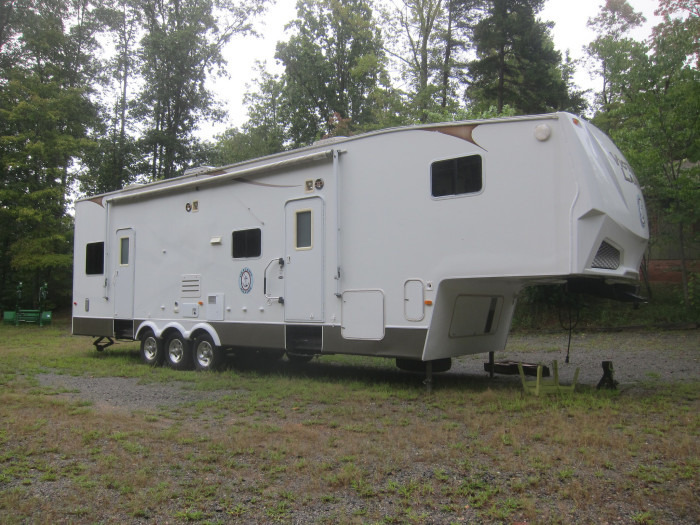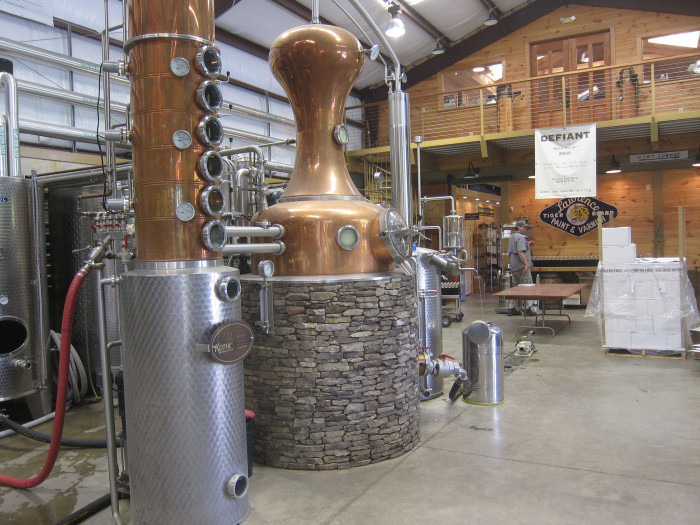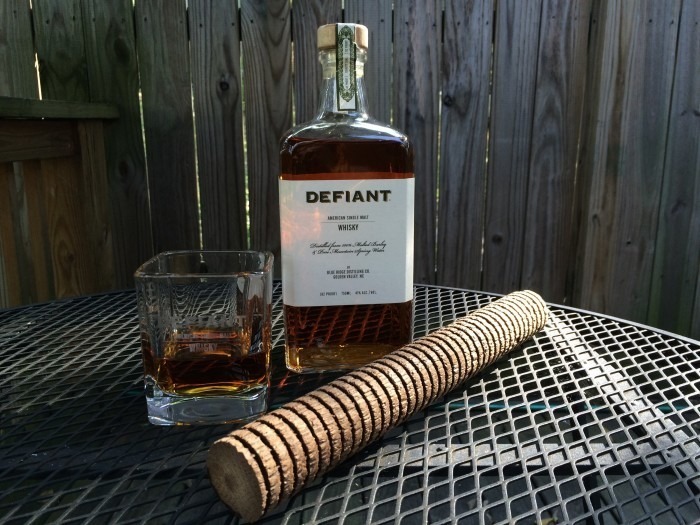The Man Who Pumped NYC's Tunnels Post-Sandy Now Makes Great Whiskey
Tim Ferris is a man of multiple passions, all of which depend on water. His main gig is as the head honcho at Defiant Marine, an international emergency response commercial salvage operation that is on the speed dial of anyone looking for assistance when a container ship sinks or an offshore oil rig is in peril. In fact, after Superstorm Sandy hit the Northeast in 2012, Ferris was chosen to put together a team to pump out more than 30 million gallons from the N and M subway tunnels between Manhattan and Brooklyn.
Because these tunnels happened to be at the deepest point in the entire subway system, the Defiant team's talents at what is referred to as "hard-hat diving" made them clearly the best choice for the job. From his home in western North Carolina, Ferris sent up the undersea equivalent of the Bat Signal and assembled a team of intrepid salvage divers from across the country, and within 24 hours of the storm they found themselves camping out in Battery Park at the still-dark tip of Manhattan. After 11 days of intense work illuminated only by headlamps deep in the bowels of the MTA system, the tunnels were clear and the team returned to their respective home bases.

If you're imagining some sort of "A-Team" of rag-tag heroes waiting for their next dangerous assignment, you're pretty much right on. But Ferris needed something for his squad to do during their downtime to keep busy. Ferris has been obsessed with single-malt whisky since his first neat sip of the Macallan 12-year-old, and a kernel of an idea had been percolating in his brain for years.
"I realized that I had a team of freethinkers and fabricators with serious torch skills," he recalls. "So I figured why not build a distillery?" He already had a facility that he had constructed to store salvage gear until he figured out that clients wanted his personnel and skills more than they needed his equipment, so he changed his model to a more flexible response option and got rid of the heavy equipment.
The previous storage facility was located on Ferris's 112-acre family property in the Golden Valley of North Carolina, about 45 minutes southeast of Asheville. The area earned its name in the first half of the 19th century, when mines produced enough gold ore to create the Charlotte mint and pretty much finance the U.S. government prior to the Civil War. But it also had a slightly more nefarious history as a hotbed of moonshining.
Over the years, Ferris had discovered the remains of nine different stills on his property, and he knew the reason his land had been so popular for illicit distilling: the water supply. "We've got amazing water here in this valley," he explains. Runoff from the Blue Ridge Mountains is filtered through limestone into a crystal-clear aquifer from which Ferris draws water through a 260-foot-deep well. He knew he had the most basic raw material to create a truly special spirit.
But unlike 19 of the 24 other distilleries in North Carolina, Ferris didn't want to be trendy and make a newfangled version of moonshine, and he was pretty darned adamant about it. "The moonshine ship has sailed, and distributors are pretty much over it. True moonshiners of the past were people who actually put their property, their freedom and their lives on the line to make liquor outside of government regulation. I have a real problem with people who just make corn whiskey and put 'moonshine' on the label of a bottle on the liquor-store shelf!"
Ferris knew that he didn't want to use purchased spirits like other new distilleries or make vodka or a "white dog" clear whiskey, but he also knew that he didn't have the capital to wait eight to 12 years for whiskey to age in barrels. Ferris decided to create a true American single malt whisky, dropping the "e" to reflect his reverence for his favorite spirits from Scotland.
The Defiant Whisky team set about purchasing and fabricating a system to create the purest malt distillate using a 3,300-liter brewing system and a 1,000-liter Kothe still from Germany. "Our philosophy is to use the finest ingredients, the best equipment and the smartest techniques to create the best whiskey we can." That process starts with using 100 percent two-row pale ale brewer's barley to mash into the tanks to produce the barley wine that is then fermented.

"The better you are at making a distiller's beer, the better the spirit will be. Unlike regular beer, which is consumed by the customer, brewer's beer is consumed by the still. If you don't get the first part of the process right, you're only going to concentrate your flaws in the still." The Minnesota barley that Defiant purchases is higher quality than most distillers use, and it is never peated or smoked. This allows the pure flavor of the grain to come through.
Another thing Defiant's brewers do that is different from most distilleries is they lauter the mash before distillation. Common practice among beer brewers, lautering is the process of separating the clear mash from the residual grain by trickling water, or sparging, through the bottom of the tank before fermentation. This routine takes a lot of extra time, but it removes the harsh flavors that can be imparted by the husks of the barley.
After three distillations through the still, the resulting whiskey is crystal-clear and incredibly smooth, especially considering that it comes off the still at a higher proof than almost any other commercial whiskey distiller. Defiant's two distillers make their cuts strictly by taste and smell, eliminating the impurities at the beginning and end of the distilling run, which are called "heads" and "tails," respectively.

Coming up with this exacting process required a lot of experimentation at first. "We washed a lot of grain down the drain," recalls Jim Stahl, COO of Blue Ridge Distilling Co., Defiant's corporate umbrella. "But we were trying to create a whole new category of American single malts, not just emulating scotch."
However, nobody wants to buy clear single malt barley, so Ferris relied on his improvisational spirit developed from years of stressful salvage gig experiences to come up with a new solution to adding color and character to his white whiskey.
"We knew we had a complex and delicate distillate," says Ferris, "but it still needed oak. We recognized that the technology for maturing spirits hadn't progressed in centuries. Nobody ever sat down and designed a barrel with the specific purpose of aging whiskey. Barrels were just the shipping vessels of the day, and they happened to change the character of wine or spirits that were stored in them."
Ferris was not afraid to break with tradition. "Certainly it had been demonstrated that there is a complementary relationship between spirits and oak, but there's nothing that says you need to involve staves and iron hoops in the process." He found his solution already existed in the form of wooden spirals cut from the hearts of oak trees that were used by the wine industry to add color and character to its products. Relying on the capillary action that draws water from the roots up the trunk, down the branches and to the leaves of a tree, these spirals accepted the whiskey or wine much more quickly than relying on the almost-tidal effects of seasonal expansion and contraction of spirits in the barrel to pass liquid a few centimeters into the wooden staves of a cask.
Defiant experimented further with the number of spirals to add to each batch of whiskey and the amount of time spent toasting each spiral in a convection oven beforehand. The results were immediate and striking. Using three different toast levels and a proprietary number of spirals dropped into the spirits stored in 350-gallon stainless tanks, Ferris likes to think that they're not advancing the age of their whiskey but are actually enhancing it.
"The color we get from the spirals is amazing! It's very noticeable after just 24 hours, like a 12-year-old scotch." After 60 days in the steel tanks infusing through the spirals, pretty much all of the oak characteristics have been absorbed by the whiskey. The spirits remain in the tanks for a little more than a month more to allow for finishing and resting through further oxygenation.

Defiant does not blend separate runs of its spirits, so each tank is bottled by hand in the ultimate small-batch expression. This demands a consistency of procedures to ensure that the flavor does not vary from month to month. With only five employees handling every aspect of production, distribution and sales, it's pretty easy for everyone to keep on top of quality and consistency.
Ferris is quite proud of both the process and the product. "We like to say we don't put the whiskey in the barrel; we put the barrel in the whiskey. Most people haven't tasted whiskey that hasn't been overpowered by oak. We feel like we have developed our own signature flavor by focusing on the grains instead of the peat, smoke or oak. When other people are trying to sell how old their whiskey is, we just say that they are bragging about how inefficient their process is."
Single malt drinkers must be coming around to his way of thinking. Situated somewhere between the scotch and bourbon palate, Defiant is attracting new legions of fans and has expanded distribution to 24 states and countries. It has already announced plans to double the production of its small distillery to keep up with demand and has purchased a former Girl Scout camp nearby to convert it to a new, larger distillery/visitor center and retreat camp.
Despite the success of his new distillery, Ferris is still ready to drop everything at a moment's notice to take on a salvage job anywhere in the world and has recently been involved in a major effort involving a turn-of-the-century shipwreck somewhere in the Atlantic that may soon be turned into a documentary series. But whether he's leading the environmental mitigation of a crippled oil rig or tasting his spirits straight off of the still at Defiant, you can bet that Ferris will be really concerned about the water.

